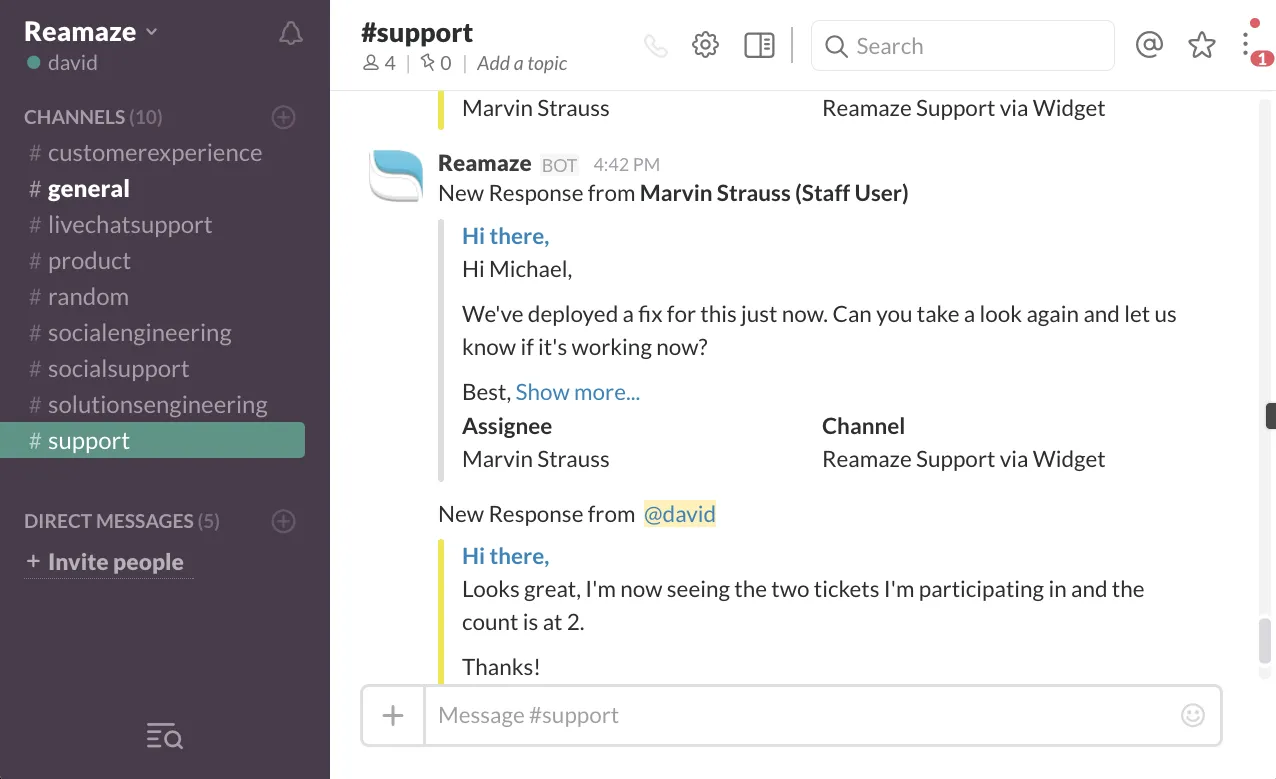Last Updated on August 31, 2023 by David
Customer service tips for startups and small teams.

There’s no better way to work than at a startup that understands the beauty and importance of staying small. Our customers often ask about how we’re able to offer such spectacular customer service given our customer experience team is still under 5 people. Here are some tips and tricks from our own team to help you work faster with less:
Open Notifications
Like a good choir, getting everyone on your team on key is the foundation of a good performance. Use a range of synchronized notifications to get everyone synced up. This applies to individuals of a specific team as well as across different teams. We dog-food our own support platform on a daily basis a use an option called “Verbose Notifications’. That means we’re each notified of every incoming and outgoing piece of message from and to customers.
A myriad of notifications are built into every app and should be plugged into integral parts of your workflow. We also rely on email notifications as well when we’re not in the office. This helps us stay up to date with what others are doing. If you don’t currently use Reamaze, other customer service platforms’ notifications system is equally great and should be maximized in your workflows.
Bookmarks and Folders
When you’re working fast, you can’t afford to waste time looking up things. Train yourself and your team on creating good bookmarks and folders to track important pieces of content. Everyone works differently so it’s perfectly normal for each individual to have a different bookmarking process. That said, it can be extremely beneficial to invest in a tool like Dropmark so bookmarks and important pieces of content can be shared and accessed. We recommend getting together as a team and coming up with a categorization structure that makes sense for your customer service context.
A Solid Internal Knowledge Base
We’re big supporters of customers helping themselves. We’re even bigger supporters of staff members helping themselves. This can take huge pressures off of rigorous training and hand-holding regiments. The caveat here is that the articles need to be well-crafted and maintained.
No Templates
Every customer service team relies on macros and response templates to get through their workload faster and more efficiently. We’re not against response templates whatsoever but try to limit them to only things like “You’ve reached us by mistake”. Experimenting with response templates is a debate we have among our team every other month. Over the past few years, we’ve come to the realization that full-blown response template slow us down in the long run. It diminishes our ability to tailor each reply to each customer because no two replies are the same. Each time a full reply is copied and pasted, more time has to be taken to re-read, re-edit, and re-tune.
Instead of using response templates, encourage your team to stock up on a list of short blurbs. Blurbs are universally applicable and much faster than editing a long template. Response templates should be avoided during training sessions as it builds up laziness and deficiencies in paying attention to detail at an early stage.
Group Communications
We can’t stress this enough: integrate your support platform with your team communications app! Do it now! We use both Slack and HipChat to discuss incoming customer requests on-the-fly and in real time. We also use ScreenHero for helping each other diagnose customer issues. When support agents need to go through closed processes to get their questions answered, responses back to the customer will slow as well. Traditional support teams are too silo-ed and result in silo-ed communications. Open up your processes to help clear out internal questions and concerns.

Unbuckled Hours
Time fragmentation is a legitimate strategy for smaller and more nimble customer service teams likes ours. 9–5 is unscalable for a support team like ours. Therefore, we’ve given each teammate the flexibility to work whenever and wherever they want. Unbuckled hours allow the customer experience team to design their own natural structure: everyone working separately and in sync yields better long-term results than everyone working together and having to abide by the 9–5 hours.
Group Lunch Outings
Every startup with a bit of money seems to be offering catered lunches nowadays. We think it’s lame, honestly. Most people see it as a luxury until they realize they’d still prefer to head out for a brief walk and just not talk about work for a while. Going out for lunch can be great for depressurizing and boosting overall productivity.
Other upsides? Paying for a group lunch even two to three times a week will save you tons of money as a business. It’s what we do here and our teams are much happier. The process of selecting a place to eat is engaging as well since we’ve designed processes and games around it.
Interested in what else we have to say? Make sure to recommend this article and follow us for more stories about startup life, customer service, and tips on treating customers right.
You can also find our multi-brand, multi-channel customer service platform at https://www.reamaze.com. Follow @reamaze.

